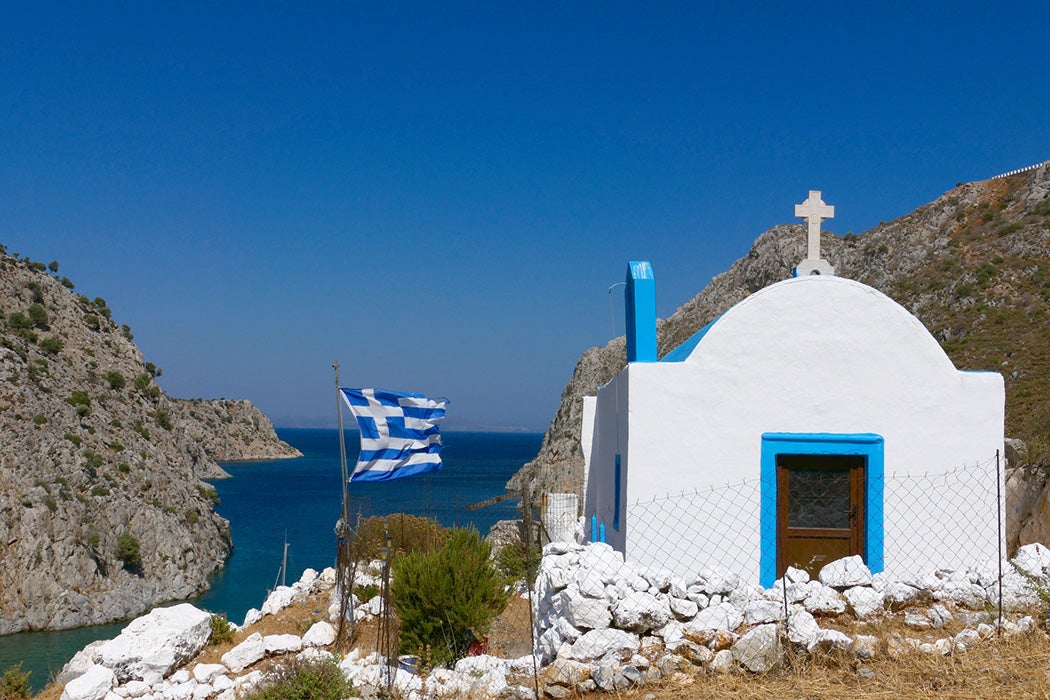Hunting for eggs is fun, but if you’re interested in a really eye-opening (ear-opening?) Easter tradition, anthropologist David Sutton suggests turning to the Greek island of Kalymnos. Sutton describes renting a house across from a churchyard there in 1992. When locals warned him about “the dynamite” his family could expect at midnight on the eve of Orthodox Easter, he pictured a fireworks display. But what he experienced was something else:
Amid cries of “Christ is risen” several hundred pounds of TNT formed into projectiles of two or three pounds each were hurled into the sky from the church courtyard, rattling our house to its foundations, cracking two window panes, and sending the window handles flying across the room.
Kalymnos is known for its fishermen, and, particularly, its sponge divers, who fueled its economy for much of its history. In the twentieth century, sponge divers would also harvest a different kind of catch: mines and torpedoes left behind after the world wars. Locals scraped dynamite from the defunct weapons to make bombs for use in “dynamite fishing”—using an explosion to kill all the fish in an area of ocean.
Sutton found that many Kalyminians tied the modern tradition of “dynamite throwing” on Easter to their sense of their own toughness—and to their resistance to authority. Many connect it to the island’s resistance to Italian occupation between 1912 and 1942. In particular, they describe an incident in which locals set off dynamite on one mountain and then, when Italians ran up to investigate, bombing another mountain across from it. This event is commemorated in the most significant dynamite-throwing event each Easter, when two groups of men set off bombs from atop two mountains while an audience watches from the harbor below.
Today, the use of explosives remains a statement about authority—including both the Greek government and the Church. When Sutton watched the 1992 dynamite throwing at the churchyard, he noticed that the priest who came to read the liturgy just after midnight was “visibly shaken” by the explosions,” which “was considered the dynamiters’ victory over the priest and the church authority he represents.”
But Sutton found the island’s residents were split in their feelings about the tradition. Detractors pointed to a tragedy in 1980 in which a mistake by a thrower resulted in four deaths. They also noted the expense of explosions and the damage they can cause.
Weekly Newsletter
Several years before Sutton’s visit, the mayor had organized a daytime party with free drinks in an attempt to discourage bomb-throwing. However, Sutton writes, “the stage that the band was setting up for its performance was blown up by dynamiters, who were determined not to see any curtailment of their privileges.”
Today, despite all the concerns about the practice, it remains part of the island’s Easter celebrations.
“If some complain that the dynamite hurts tourism, others see it as a warning to outsiders—Greek and otherwise—that Kalymnos will preserve its resistant spirit,” Sutton writes.







